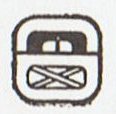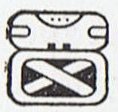1. The purpose of these excursions wide and far is to try to establish if there could have been a generally accepted view of how the cycle of the year should be constructed. So I wish to add for comparison also the information from Chatham Islands.
Earlier I have tentatively numbered (and then also coloured) the sons of Tu beginning with a zero at the first son Rongo, borrowing an idea from how the days of the months were numbered among the Maya (avoiding number 20):
... The Maya New Year started with 1 Pop, the next day being 2 Pop, etc. The final day of the month, however, carried not the coefficient 20, but a sign indicating the 'seating' of the month to follow, in line with the Maya philosophy that the influence of any particular span of time is felt before it actually begins and persists somewhat beyond its apparent termination ...
However, their first month Pop was numbered as 1, not as 0, and Rongo should not be the last month but the first. In my ambition to put in parallel the first glyph in line Eb7 with the first of the two Tiki sons of Chatham Islands - wishing to reach the colour red (5) for him (the Sun god) - I assigned a zero at the first son Rongo. I now believe this my construction was wrong, Rongo should be number 1. The first Tiki son will then be numbered 6 (instead of 5 as in fire):
|
4 Rongomai |
Kahukura |
 |
 |
| Eb6-35 |
Eb6-36 |
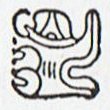 |
 |
|
4 Zotz |
Tzek |
|
6 Tiki |
Uru |
Ngangana |
 |
 |
 |
| Eb7-1 |
Eb7-2 |
Eb7-3 |
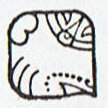 |
 |
 |
|
6 Xul |
Yaxkin |
Mol |
|
The 'tree' (rakau according to Metoro) in Eb7-3 could announce the return of Sun in spring, and if so, then the time is a quarter earlier than at Mol. |
|
9 Io |
Iorangi |
Waiorangi |
Tahu |
 |
 |
 |
 |
| Eb7-4 |
Eb7-5 |
Eb7-6 |
Eb7-7 |
 |
 |
 |
 |
|
9 Ch'en |
Yax |
Sac |
Ceh |
|
The 'sweet water of red dawn' (vai okahega) in Eb7-4 coincides with the time when Sun goes down into the well in Ch'en. Sun-day in Eb7-5 corresponds to the green of Yax, and instead of the white of Sac there is a variant of manu rere which I guess represents Moon:
"As to be expected, the associations of White are very different from those of Red; its chief use is with the White Lady, Ixchel, the Rainbow goddess ..." (Gates, a.a.) |
|
13 Moko |
Maroro |
Wakehau |
 |
 |
 |
| Eb7-8 |
Eb7-9 |
Eb7-10 |
 |
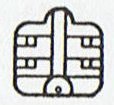 |
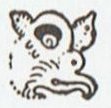 |
|
13 Mac |
Kankin |
Moan |
|
Toa in the central position of Eb7-8 is not exactly the same as that in front in Eb6-33, 11 glyphs earlier. Neither is manu rere in Eb6-33 the same bird as in Eb7-6. The sinking Sun at bottom of the 'tree' in Eb7-9 corresponds to the similarly sinking Sun at the bottom of the 'skeleton ribs'. |
|
16 Tiki |
Toi |
Rauru |
Whatonga |
 |
 |
 |
 |
| Eb7-11 |
Eb7-12 |
Eb7-13 |
Eb7-14 |
 |
 |
 |
 |
|
16 Pax |
Kayab |
Cumhu |
Vayeb |
|
The evident similarity between Pax and Vayeb is paralleled by an evident similarity between Eb7-11 and Eb7-14. |
We have no pictures of the sons of Tu, therefore our only means to reach independent ideas of who these 19 persons were is to investigate what their names possibly might mean. Unavoidably, though, such a method will be influenced by associations from the glyphs which I have assembled in parallel.


